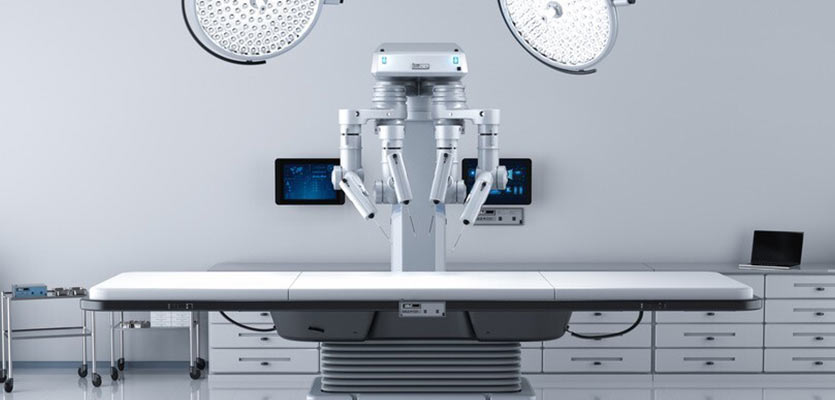

MBBS (AIIMS), MS (Surgery, AIIMS), MNAMS, FACS (USA), FICS (USA), FUICC
Fri, 09 Feb 2024

Robotic surgery has brought transformative advancements to thoracic medicine and the management of conditions, particularly those needing thoracic surgery, by merging the precision of robotics with the skills of experienced surgeons.
In a world where medicine has advanced to new heights, it isn’t surprising that the advent of robotic-assisted surgeries in treatments like lung damage repair, chest trauma repair, mediastinal surgery, etc., has become the norm. Dr Arvind Kumar, a leading thoracic surgeon in India, is one of the few who leverages the power of robotic surgery to treat his patients.
This guide will explore everything you need to know about the significance of robotic surgery in thoracic medicine and surgery.
Robotic Surgery is a revolutionary new concept in surgery where a "robot" is interposed between the patient and the surgeon. The Surgeon carries out the operation through highly specialised instruments controlled by the arms of the robot.
The Current Robotic System (da Vinci Si HD System from Intuitive Surgicals, USA) consists of three components as shown below:
The implementation of robotic surgery in thoracic surgery has revolutionised how surgeons can perform complex procedures with precision and accuracy.
Some of the common areas of application include:
Robotic systems, including lung lobectomies and lung cancer resections, are increasingly used in lung surgery. These procedures benefit from the ability of robotic instruments to navigate delicate lung structures while minimising trauma to healthy tissues.
Not just for lung repair, the use of robot-assisted surgeries is equally fruitful for treating oesophagal damage and a variety of complications like oesophagal cancer, gastroesophageal reflux disease (GERD), and achalasia. The advanced visualisation and unmatched dexterity of robotic surgery are perfect for intricate procedures.
The robotic-assisted techniques are effective in treating a variety of complex mediastinal procedures, including removing tumours, thymectomy, and lymph node dissections. The precision ensures safe surgical interventions with minimal complications.
Various chest wall surgeries, including repair of chest wall deformities, including pectus excavatum and pectus carinatum, can be done more precisely and quickly using robotic surgeries. Since they are minimally invasive, the recovery time is much shorter.
Being the co-chairman of Medanta Robotic Institute and as a renowned thoracic surgeon with 40+ years of experience, Dr Arvind Kumar swears by the robotic-assisted surgeries for the wide range of benefits they provide for the patient and the surgeon.
Following are a few of those benefits worth highlighting:
The exact steps in the treatment involving robotic surgery will solely depend on the intent of the surgery. But, there are a few key steps that are the same for every robotic surgery:
Surgeons perform robotic surgical procedures on a specialized console, which provides a high quality three-dimensional image of the patient body. The surgeon controls the robot by maneuvering levers, pedals and buttons on the console with his arms, feet, fingers and wrists.
The robot executes these commands through instruments attached to robotic arms on the patient-side robotic cart. Depending on the surgeons requirements, the instruments can be changed easily by a scrub nurse.
In short, robotic surgery has revolutionised thoracic medicine and surgery. Robotic systems evolution and expanding applications have led to shorter recovery times, reduced pain, and improved patient outcomes.
Dr Arvind Kumar and his team at Medanta Hospital have performed thousands of surgeries using robotic technology to offer better patient care.
Copyright @ (Prof.) Dr. Arvind Kumar. All Rights Reserved / Thoracic Surgical Oncologis
License Number: U.P State Medical Council (India) No. 27637
